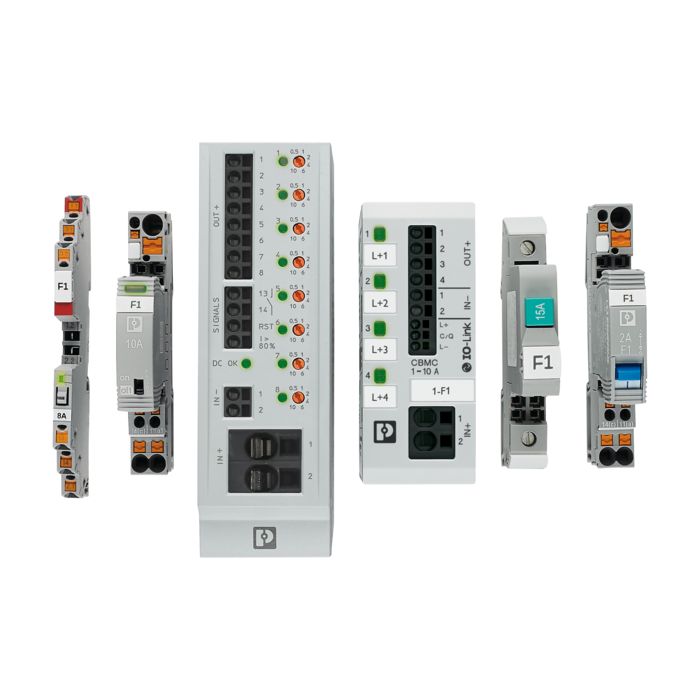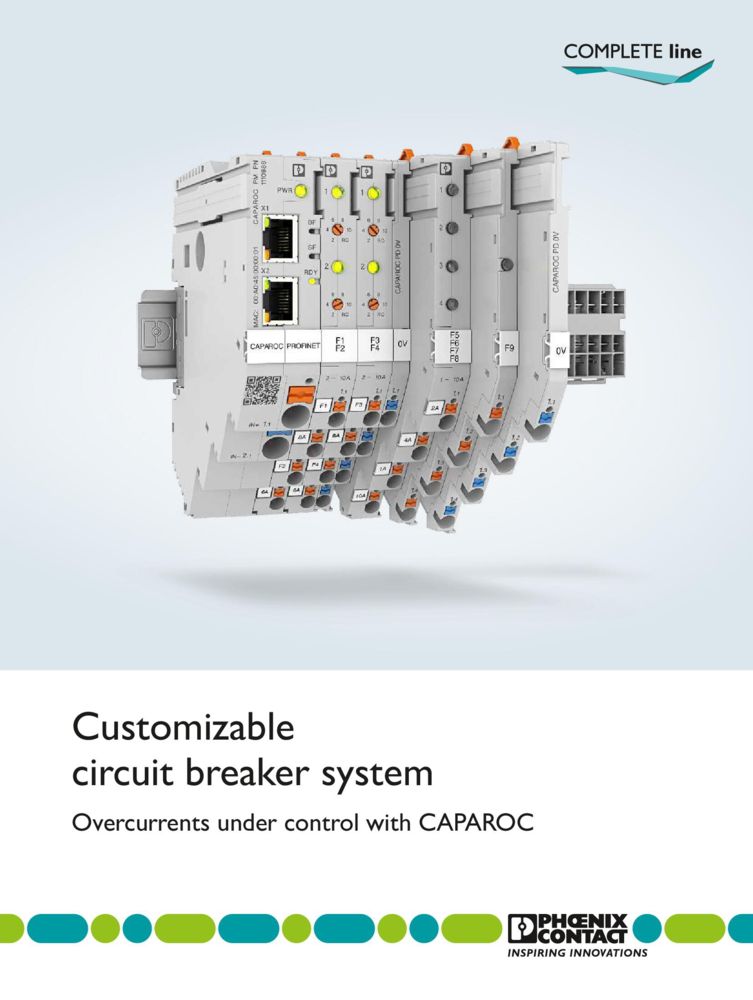
Electronic circuit breakers


Device circuit breakers protect your equipment against overload and short-circuit currents and selectively shut down just the affected circuit in the event of a fault. To provide the ideal protection, our circuit breakers use various technologies: electronic, thermal-magnetic, and thermal. Optimize your production process and minimize downtimes by using our overcurrent protection.

Electronic and thermal-magnetic device circuit breakers
Based on their function, circuit breakers can be divided into the following groups:
Circuit breakers usually protect equipment individually. In the event of an error, they shut down only the affected actuator or sensor in the faulty circuit.
This means that the production process continues running without interruption.
Based on their function, circuit breakers can be divided into the following groups:
| Tripping time in the event of overload | Tripping time in the event of a short circuit | Your application is optimally protected in the event of | |
|---|---|---|---|
| Thermal device circuit breakers | Suitable | Unsuitable | Overload |
| Thermal-magnetic circuit breakers | Suitable | Ideal | Overload, short circuit, and long cable paths (thanks to SFB tripping characteristic) |
| Electronic circuit breakers | Ideal | Ideal | Overload, short circuit, and long cable paths |

You will find more information about our device circuit breakers in digital form here. Take a look at the e-paper or download our brochures as PDF files.

Device circuit breakers:
• Function: Protects individual devices or small circuits against overload and short circuit.
• Field of application: Used primarily in control circuits, signal circuits, or to protect electronic devices.
• Capacity: Lower switching capacity, but perfect for protecting sensitive devices.
• Reusability: Can be switched on again after tripping.
Miniature circuit breakers:
• Function: Protects electrical systems against overload and short circuit.
• Field of application: Used in main distribution systems and larger electrical systems.
• Capacity: Can switch and interrupt high short-circuit currents.
• Reusability: Can also be switched on again after tripping.